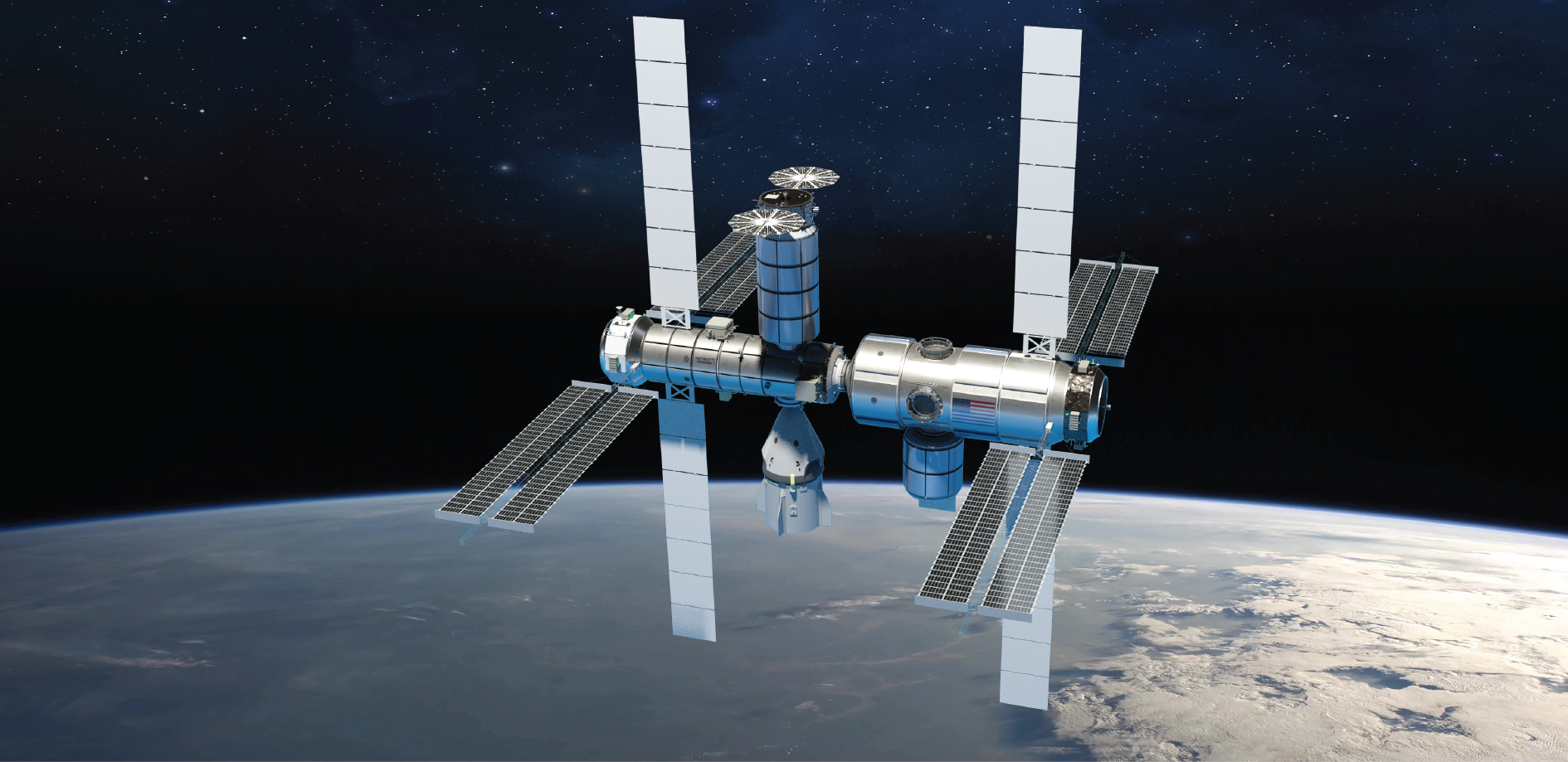Latest News
Blue Origin, Nanoracks, and Northrop Grumman to Develop New Space Stations for NASA

A rendering of Northrop Grumman’s Low-Earth Orbit commercial free-flying space station. Photo: Northrop Grumman
NASA has awarded a combined total of about $415.6 million to Blue Origin, Nanoracks, and Northrop Grumman to develop commercial space stations in Low-Earth Orbit (LEO), the agency announced Dec. 2.
These awards are part of NASA’s plans to transition from the aging International Space Station (ISS) to commercial space stations, which will be available to both government and private-sector customers. These are the first awards of a two-step process. In this phase, the industry awardees will formulate and design the space stations through 2025. In the second phase, NASA will certify the commercial space stations for NASA crew.
Blue Origin has been awarded $130 million, Nanoracks $160 million, and Northrop Grumman $125.6 million through NASA’s commercial LEO development program.
Blue Origin won for its previously announced Orbital Reef concept in partnership with Sierra Space and other industry partners Boeing, Redwire Space, and more. Orbital Reef is described as a “business park” in space for research, industrial, international, commercial, and tourism customers, and is projected to be operational in the second half of the decade.
“In addition to meeting the ISS partners’ needs, the Orbital Reef mixed-use space business park will offer reduced costs and complexity, turnkey services, and inspiring space architecture to support any business. No one knows how commercial LEO markets will develop, but we intend to find out,” commented Brent Sherwood, senior vice president of Advanced Development Programs for Blue Origin.
Nanoracks’ commercial LEO destination, is called Starlab, and was announced in October. Nanoracks is working with Voyager Space and Lockheed Martin, and Starlab is targeted for launch in 2027. It will host the George Washington Carver Science Park featuring a biology lab, plant habitation lab, physical science and a materials research lab.
Northrop Grumman’s design was announced for the first time on Thursday. It leverages the Cygnus spacecraft that currently provides cargo delivery to the ISS. The design uses an overlapping stage approach to minimize initial costs and allow capabilities to be added as time goes on. The team includes Leidos subsidiary Dynetics, with other partners to be announced.
NASA Administrator Bill Nelson argues the commercial model will save costs and allow the agency to focus on space exploration through its Moon and Mars programs.
“With commercial companies now providing transportation to Low-Earth Orbit in place, we are partnering with U.S. companies to develop the space destinations where people can visit, live, and work, enabling NASA to continue forging a path in space for the benefit of humanity while fostering commercial activity in space,” Nelson said.
The NASA Office of Inspector General (NASA OIG) recently performed an audit on NASA’s management of the ISS and efforts to commercialize LEO. NASA plans for one or more commercial LEO destinations to be operational by 2028, giving a two-year overlap before the ISS’s anticipated retirement in 2030.
NASA OIG said the success of these programs is “crucial to avoid a gap in Low-Earth Orbit access,” but NASA will face “significant challenges” to making the timeline work, including limited market demand, inadequate funding, unreliable cost estimates, and still-evolving requirements.
Get the latest Via Satellite news!
Subscribe Now